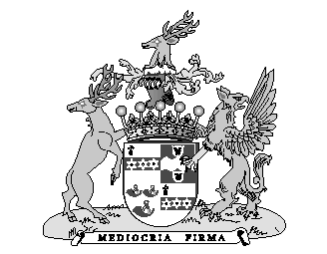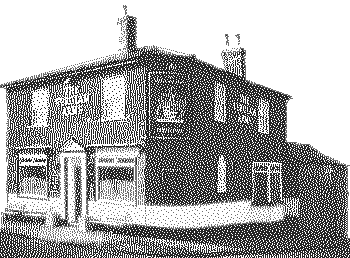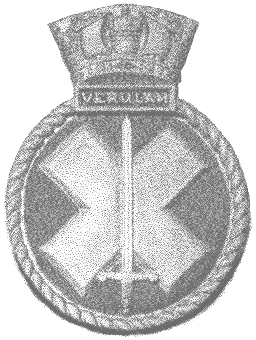|
Back to Archaeology & History Contents

The Verulam
Arms
Lower Dagnall St.
St. Albans


The Sign of the Verulam
Arms
The name Verulam derives from Verulamium,
the Roman City which preceded St. Albans. The sign displays
the arms of the Earl of Verulam who lives at Gorhambury
close by the city. The first Earl, John Walter Grimston
received the title on the 24th of November 1815. The motto
Mediocria Firma (mediocrity is safe), was earlier used by
the famous philosopher, scientist and politician, Sir
Francis Bacon (sometime Baron Verulam) (1561&endash;1626)
who also lived at Gorhambury.
Before the coming of
the railways St. Albans occupied an important position on
the London/Chester/Holyhead Rd. and much of its prosperity
came from the coaching trade and other travellers who used
the many inns and other victualling houses in the town. In
1796 the present London Rd. was opened to ease the passage
of traffic through the town, but this still left the main
road going down Fishpool Street and along St. Michaels
Street. When Thomas Telford improved the Holyhead
Road he cut a new road through
the town centre (Verulam Rd.) which opened on March 25th
1826. To take advantage of this new road, a new hotel was
opened along side it; The Verulam Arms (actually licensed in
1825). One of the investors in this project was the Earl of
Verulam, and the hotel took his arms as its sign. However 12
years after Verulam Road opened the new Railway from London,
Euston, to Birmingham had almost annihilated the traffic
using it, so beginning the end of the coaching trade. In
1848 the Verulam Arms was sold and its Tap and stable
demolished to provide for the building of a Roman Catholic
Church. The main building survives and is now used as a
nursing home.

The Verulam
Arms
The "Verulam", as the locals call it,
opened in October 1853 and celebrated the occasion by
providing for "a numerous and respectable party of the
inhabitants of the town," a superior repast" and an evening
of "conviviality and harmony". One wonders what the reaction
was from the congregation of the nearby Temperance Chapel
(from which Temperance St. got its name) to their new
neighbour? Early success was marred in 1854 by the
bankruptcy of the landlord Joseph Eggleston, previously of
the Crabtree in St. Peters St. The house survived however
and the present licensee, May Viccars, is carrying on a
tradition of feminine hospitality, as for some 40 years from
the 1920s until 1962 the house was run by a landlady. May is
quite firm that the Verulam motto on the sign "mediocrity is
safe" will not reflect the standards of her
establishment.
Dagnall Street
This street formed part of the Medieval
Town and has borne its name since at least 1240. It was cut
into two, Upper and Lower Dagnall Street, by the building of
the 19th century Verulam Rd. In the Middle Ages only the
northern side of the street was built up with the properties
there having long strips of agricultural land stretching
back to the town boundary. The southern side of the street
did not become heavily built up until the 19th
century.
Welclose Street
Like Dagnall Street this formed part of
the Medieval Town. In the 15th century it was known as
School Lane because of its proximity to the Abbey's school
situated a little uphill of the Romeland corner. At times
the street was known as Dagnall Lane but its present name
comes from a plot of land situated behind it on the west,
known as Well Close. This was described in 1597 as "alias
Squillers" and can be identified as the site of the medieval
toft of Squillers.
H.M.S. Verulam
On the wall of the bar is the crest of
the Second World War HMS Verulam. Commissioned in 1943 as a
destroyer of the Home Fleet, she sailed in support of arctic
convoys to Russia and later saw service in the Far East.
With the coming of peace the ship was laid up in Portsmouth
and eventually broken up. The ships bell was bought by
members of the crew and presented to the City. Originally it
was hung in the Town Hall but is now in the District Council
Offices.
Go to the Six
Bells, the Tudor
Tavern The
Boot, or the White
Hart
Back to Archaeology & History Contents

|